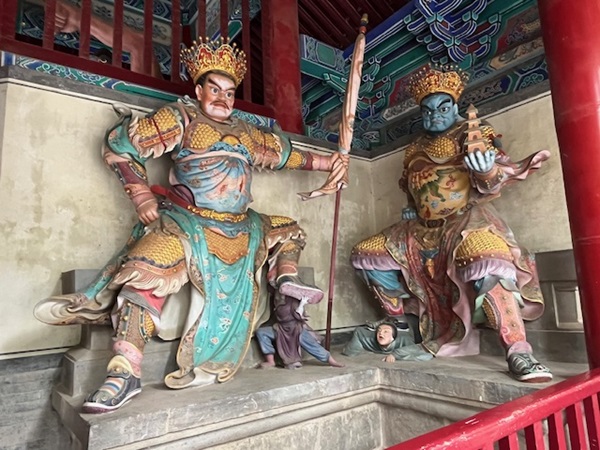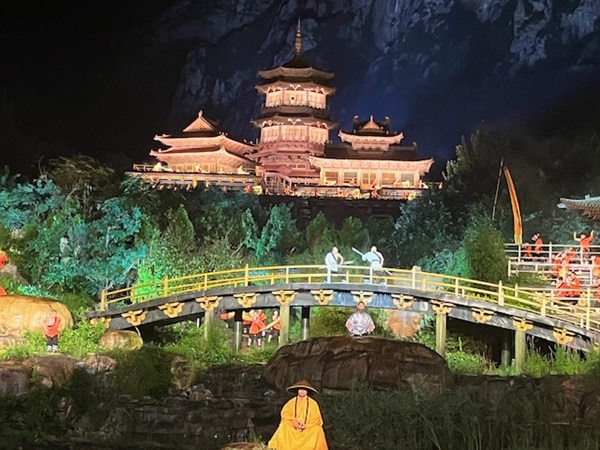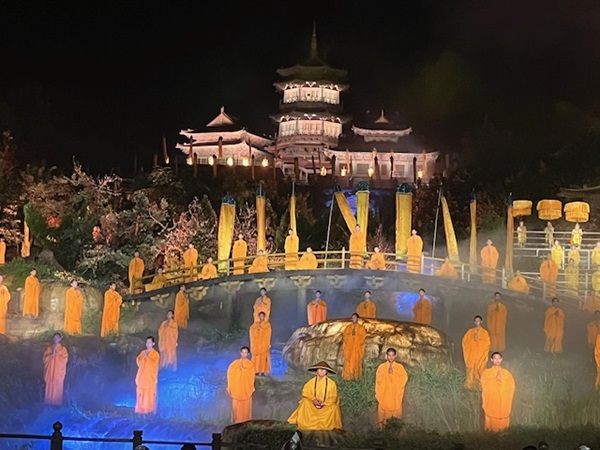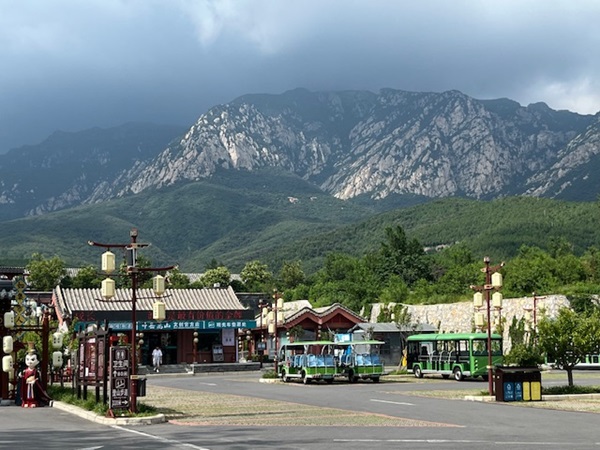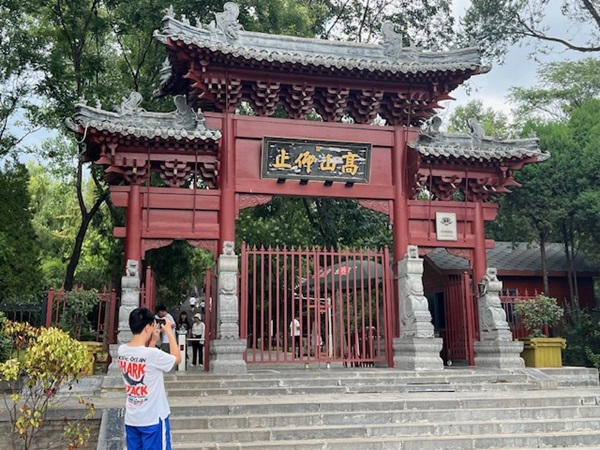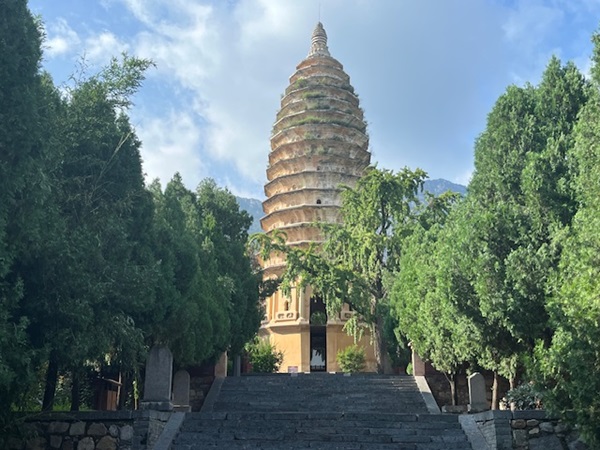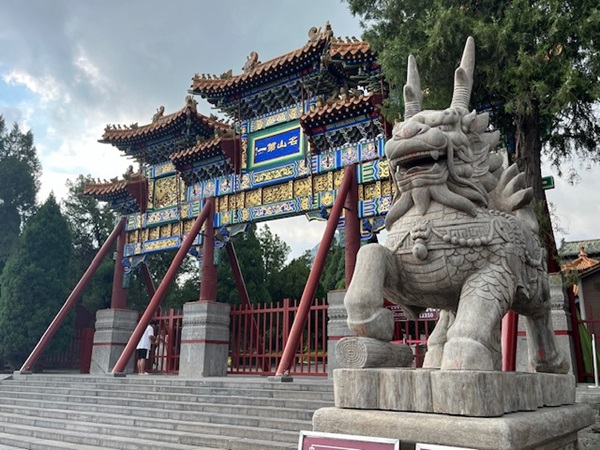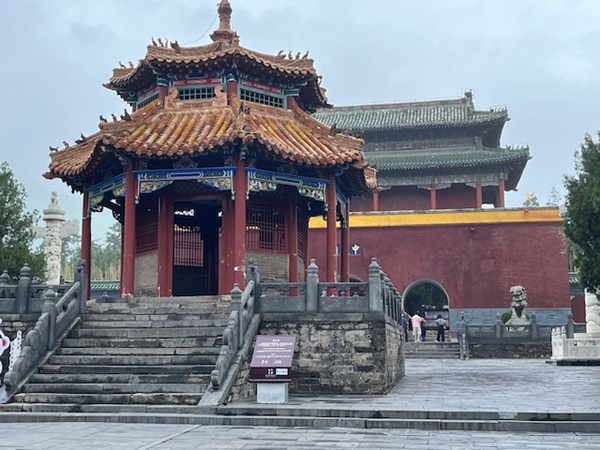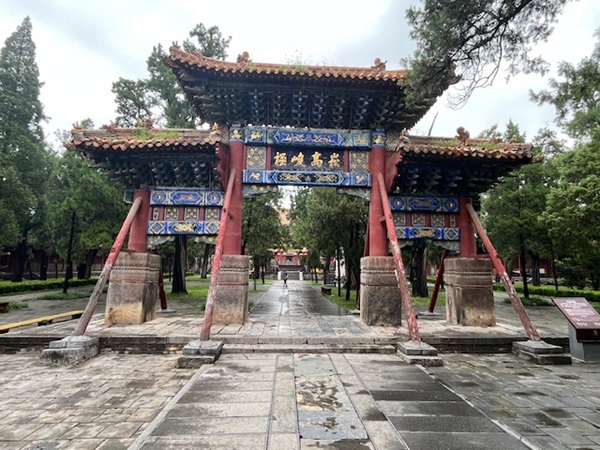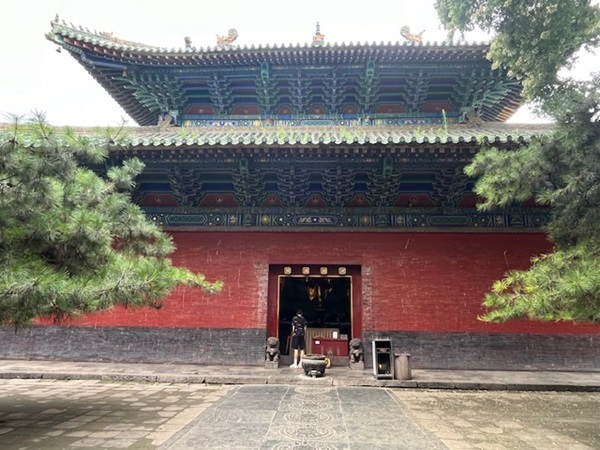 Shaolin Temple;
Credit: Chronicle.lu
Shaolin Temple;
Credit: Chronicle.lu
Continuing my series of articles on my recent visit to Henan proving in China, this one focuses on what we got up to in Dengfeng.
Around a 45-minute drive from Luoyang - unfortunately there are no rail connections to this city - Dengfeng is surrounded by mountains and has a local population of around 700,000 and certainly feels more provincial.
It is worth noting that the food here was without a doubt the best on the trip; and it was not for the fact that we were allocated private dining rooms (as we were elsewhere). The food had been chosen for us and included a mix of soups, meat (chicken, pork and beef) and vegetable dishes, as well as tofu, rice and noodles. Just the right mix of spicy and sweet dishes, with wonderful sauces. Another custom that became recognisable during my visit was that soups are normally served late in the meal (not at the start), rice may or may not be served, and a noodle dish is normally served last before a light dessert of fruit slices.
We visited the Shaolin Temple, noted as the birthplace of Zen Buddhism and a holy place for martial arts - it houses the largest Kung Fu school in the world, with over 30,000 students enrolled concurrently. In 495 AD the emperor build a monastery there to translate Sutra from Sanskrit to Chinese. Around 360 monks live there now. Also of interest was the "Pagoda Forest" in the grounds: this is a cemetery the pagodas are built of stone for those who died aged 70 or older, and of brick for those who died before they reached 70 years; this reminded me somewhat of similar customs practised in Thailand.
At the Songyang academy, with plenty of steps to reach each level as it is built on a hillside (as are many more), we learnt that while this originally used to be a Buddhist temple, it then became a Taoïste temple and is currently a Confucius temple, and is no longer an academy.
The Songyue Pagoda is claimed to be the oldest pagoda constructed by brick - instead of by wood - in China; it was made from bricks in 520 AD and remains as a tourist attraction. It used to have a stairway (wooden) inside but this burnt down a number of years ago and has not been replaced.
As in Louyang, there is plenty to do in Dengfeng after dark; we attended an open-air extravaganza entitled "ShaoLin Zen Music Ritual". With around 800 seats, this is by no means a small spectacle, quite the reverse, with well over a hundred performers taking advantage of the natural beauty of the mountainside, with plenty of rocks and vegetation, as well as a river running naturally through it, a waterfall to the side and a central bridge. We happened to be there when the rain decided to fall shortly before the performance started, but everybody was handed ponchos which did what they were supposed to do, keep the water off; at least it stopped raining half-way through the hour-long performance which comprised singing, acting, choreography, kung fu, performing musical instruments and much more, with the storyline focussing on the Buddhist monks and villagers living in harmony. They even incorporated live goats and horses into the performance. This stunning visual and audio spectacle is certainly not to be missed!
And we also visited the ZhongYue Temple in Dengfeng, learning about the five elements: fire, water, earth, metal and wood. As with many of the previous visits to temples, etc., the stories told are based part on fable and part on truth (historial accuracy); also, taking photographs outside temples was perfectly admissible, yet taking them inside was not. One of the most impressive parts of this temple was the long hallway comprising mannequins dressed in different costumes, some appearing quite gory indeed: that was called the Ministry of Hell, or the Department of Hell, one of 36 that exist...
The Taishique gate is considered an ancient relic (just one of three remaining from the Han Dynasty): it dates back to 118 AD (the same period as the White Horse Temple) and had just two columns remaining, with ornate details engravings / inscriptions.
The Ancient Star Observation Platform dates from the Tan Dynasty (770 BC). The first structure measures the shadow of the sun at midday every day and therefore it was used to calculate the dates of the summer and winter solstices, etc., when the shadows were the shortest and longest respectively, long before the Gregorian Calendar was invented (by Pope Gregory in 1582). Next to it is a building, a second structure for measuring time, this one dating from the time of Genghis Khan, who ordered it to be constructed in 1276 as one of 27 built, with this one and the one in Beijing being the two central ones. The third structure is a much more recent addition which was created to demonstrate how the others work.
For the main / introductory article on my trip to Henan, please click here.



